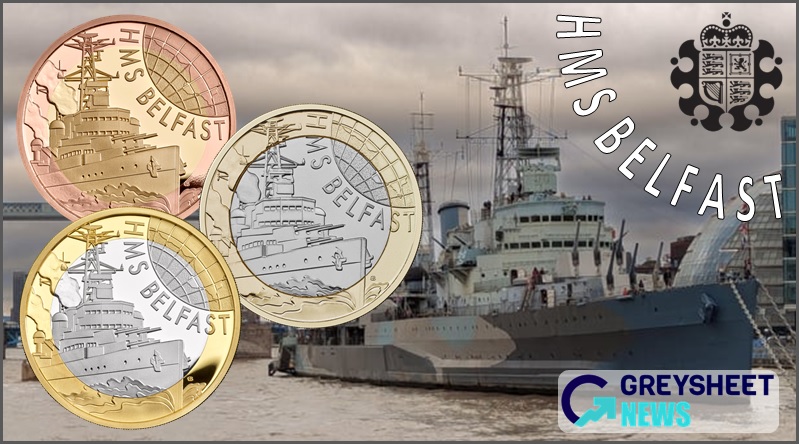Greece: New Silver Proof Coins Mark World War II-Era of National Remembrance
The Bank of Greece release their latest silver proof collector coin in honour of a poignant national remembrance.
Greece reluctantly entered World War II on the 28th October 1940, when Mussolini’s army invaded the country from the Greek-Albanian border. After fierce and heroic fighting, the Greek army not only repelled the attack but were also able to push the invaders back into Albania and gained territory. Remembered in Greek history as the day the Greeks said ‘OXI’ or, NO to invasion – Greek resistance resulted in the first defeat of the Axis powers during World War II. Italy’s failure to occupy Greece forced the German Third Reich to launch an attack on Greece and on the 6th April 1941, Germany invaded the country from its northern border with Bulgaria. The Greek army found themselves fighting against Italians and Germans at the same time and despite the arrival of the Allies comprising 60,000 Australian, New Zealander, British, Cypriot, Palestinian, and Jewish soldiers who arrived in Greece in March 1941, they could not halt the onslaught of Germany’s invasion and occupation. The fight to occupy Greece lasted two months and was complete by the 30th May 1941 with victory by the Axis forces in the Battle of Crete. A triple military occupation comprising German, Italian and Bulgarian forces resulted in the country being divided into three occupation zones. By the end of April 1941, King George II and the Greek government were forced to leave Athens to avoid capture by the German army. A Greek government-in-exile settled in London with its military department located in Cairo.
During the occupation of the triple German, Italian and Bulgarian armies, Greece paid a heavy toll and ultimately lost nearly ten percent of its overall population to armed conflict, famine and reprisals. The Greek people’s indomitable spirit and stubborn reaction to the fascist occupation triggered fierce reprisals by the occupying troops, which destroyed some 1,700 settlements in retaliation to the National Resistance activities, committing mass executions of civilians, arson and looting. The massacres of Distomo in Central Greece, Kalavryta in the Peloponnese, Kommeno in Epirus, Doxato in Macedonia and Viannos in Crete figure among the worst atrocities during World War II. In the Bulgarian occupation zone, persecutions took the form of ethnic cleansing aimed at the forced ‘Bulgarisation’ of Eastern Macedonia and Thrace of the Greek inhabitants.
After nearly three and a half years, the occupation was finally ended on the morning of the 12th October when the army of the Third Reich unceremoniously took down the hated swastika Nazi flag from the Acropolis, evacuated Athens and the country was finally liberated. Sadly, the end of the war in Europe in May 1945 did not end in Greece as communist forces supported by the Soviet Union and newly installed communist governments of neighbouring countries continued to fight. Greece’s army faction loyal to the ideal of democracy battled in a civil war to prevent the country from being absorbed behind the Iron Curtain as had happened with all of the countries bordering to the north. A plebiscite was held in the country and despite a boycott from communist sympathisers, it reaffirmed the people’s wish for King George II to return to the Greek throne. He and the remaining government in exile arrived back in Greece in September 1946 which was seen as a symbol of unity against the communists and support of democracy. By 1949, the fighting had finally stopped and Greece was free of communist infiltration but the country had paid a very heavy price during what was nearly a decade of war. The martyred villages and towns of Greece were recognised by a Greek Presidential Decree and are now part of a national registry currently 131 sites and dates.

The silver proof quality coins are produced by the Hellenic Mint at their facilities in Athens on behalf of the Bank of Greece and designed by Maria Antonatou. The obverse side poignantly depicts an abstract image of a tearful and distressed woman’s face, her hand on the side of her face in despair as she witnesses the destruction of her home and village. Around the primary design along the rim is the inscription ΜΑΡΤΥΡΙΚΑ ΧΩΡΙΑ ΚΑΙ ΠΟΛΕΙΣ ΤΗΣ ΕΛΛΑΔΑΣ (Martyred Villages and Towns of Greece) Below, the year of issue, 2024. The reverse depicts a field of crosses, symbolic of the countless deaths which were the result of reprisals from occupying forces. To the lower left is a medallion consisting of the Greek Crest and the text ΕΛΛΗΝΙΚΗ ΔΗΜΟΚΡΑΤΙΑ (Hellenic Republic) and denomination of 10 ΕΥΡΩ which encircles the crest. The distinctive mintmark of a palmette is placed just to the left rim and the insignia of the designer is placed on the opposite side.
| Denomination | Metal | Weight | Diameter | Quality | Mintage Limit |
| 10 Euro | .925 Silver | 34.1 g. | 40 mm. | Proof | 5,000 |
Available from the 17th December, each coin is presented in a custom Bank of Greece-branded case accompanied with a certificate of authenticity. Collectors residing in Greece can visit the Bank of Greece’s headquarters in Athens. For additional information, please visit the numismatic webpage of the Bank of Greece.

Download the Greysheet app for access to pricing, news, events and your subscriptions.
Subscribe Now.

Subscribe to RQ Red Book Quarterly for the industry's most respected pricing and to read more articles just like this.
Author: Michael Alexander











Please sign in or register to leave a comment.
Your identity will be restricted to first name/last initial, or a user ID you create.
Comment
Comments